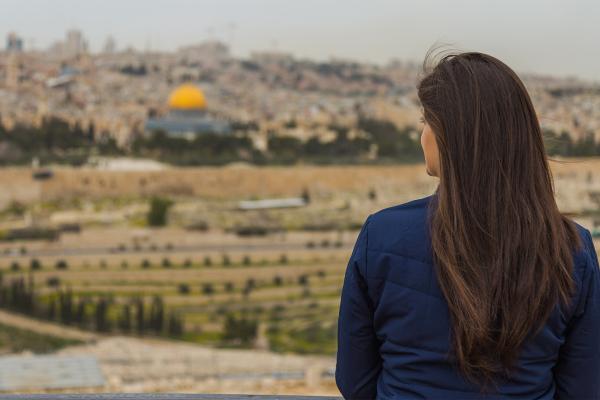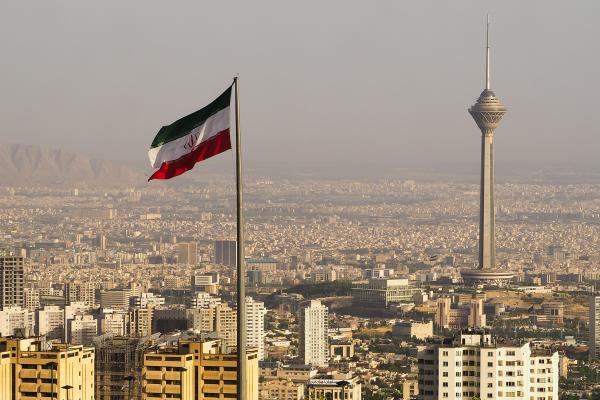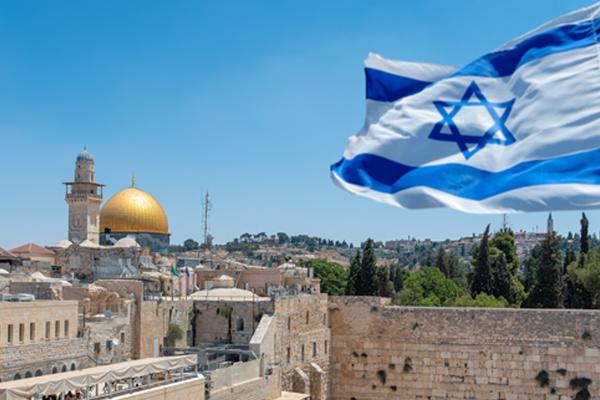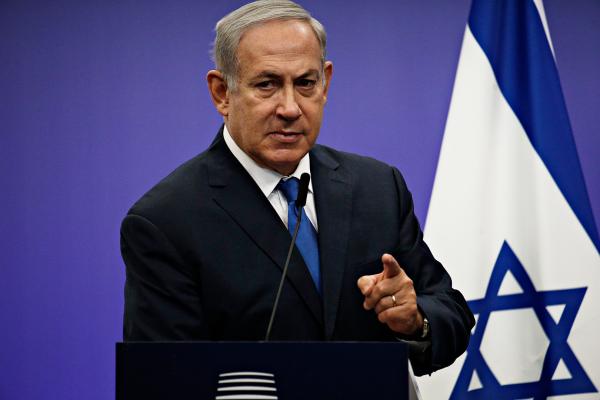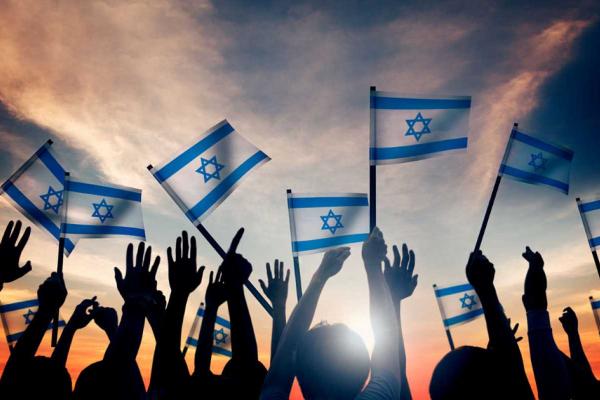
At the outset of a war, no one knows how long the fighting will last. The longest war in history persisted 781 years, between the Spanish Empire and the Moors. The shortest battle, the Anglo-Zanzibar War of 1896, lasted a mere 38 minutes.
Jerusalem Day commemorates the second shortest war in history, which arose between the enemies of Israel and the young Jewish country. It occurred from June 5 to June 11, 1967, and is aptly named the Six-Day War.
Jerusalem Day, or Yom Yerushalayim, is an annual Israeli holiday occurring on the 28th day of the Hebrew month of Iyar. This date falls in April or May on the Gregorian calendar. Events include memorial services for those who died in the Six-Day War as well as parades, parties, special meals, prayer services and much more.
The Six-Day War was monumental in modern Israel’s history, second only to her War of Independence in 1948‒1949. Israel had not intended to fight at all in 1967 but was drawn into battle by Arab neighbors whose hunger to destroy her was agitated by Russian-planted lies. After six short days, Israel gained East Jerusalem from Jordan’s control and the Golan Heights from Syria.
Both acquisitions are of incalculable value to Israel. Taking possession of East Jerusalem meant that for the first time in 2,000 years, an undivided Jerusalem belonged to Israel again. Obtaining control over the Golan Heights was paramount to Israel’s security. The area lies elevated above Israel’s former border with Syria. In Syrian control, the Golan leaves Israeli citizens vulnerable to the kind of sniper attacks that took place incessantly before the Six-Day War.
Years of such turmoil and predatory actions by enemies of Israel – her neighbors in surrounding Arab nations – laid the foundation for 1967’s brief but fierce battle. Below is a summary of events leading up to and during the Six-Day War.
1959
- Israel begins a project to bring water from the Sea of Galilee to the Negev according to a design set forth by U.S. Ambassador Eric Johnston
1964
- Syria begins a united Arab plan to divert the Jordan River’s headwaters – to thwart Israel’s water-carrying project
- Syria fires from the Golan Heights on Israeli farmers below in the demilitarized zone (DMZ). Israel responds by attacking Arab bulldozers working on the water diversion project
- Syrian and Palestinian attacks on Israeli individuals continue through 1967
1966
- Syria shells Israel, and Israel responds by downing a Syrian fighter jet
- Egypt and Syria sign a mutual defense pact. Attacks by Israel’s enemies immediately increase
April 1967
- Between January and April of 1967, Arabs carry out 63 attacks on Israel
- In April, Syria shells Israel within the DMZ, and Israel responds
May 1967
- After 14 attacks, Israeli Prime Minister Eshkol warns Syria of retaliation
- Russia meddles – plants lies about a supposed Israeli plan to attack Syria
- Egypt mobilizes thousands of troops around the Suez Canal. The Egyptian military meets with Syria and finds no state of alert there. Cairo, Damascus and the U.S. agree Syria is under no threat from Israel, but Egypt’s President Nassar continues amassing troops and broadcasting inciting messages about destroying Israel
- Egypt flies a reconnaissance mission over Dimona, where Israel’s nuclear reactor is. Israel debates the risks of inaction versus a preemptive strike in defense of her people from the enemies of Israel
- Tens of thousands of Egyptian troops amass in the Sinai
- May 22, 1967 – Egypt closes the Straits of Tiran to Israeli shipping, considered by many to be an act of war and the cause of the Six-Day War. U.S. President Lyndon Johnson condemns the blockade as illegal
- Six Arab countries respond as common enemies of Israel by deploying more than 230,000 troops near Israel’s borders
- Jordan and Egypt sign a mutual defense pact
June 1–4, 1967
- Arab leaders ramp up their rhetoric and enflame hatred among the people against Israel, declaring, “Our goal is clear: to wipe Israel off the map!”
DAY 1 – JUNE 5, 1967
- 8:15 a.m. – Fearing the loss of thousands of Israeli lives, Israel pre-emptively strikes the Egyptian Air Force, destroying 311 planes – mostly on the ground – and disabling 13 bases
- 8:30 a.m. – Israel sends a message to Jordan’s King Hussein promising not to attack if Jordan stays out of the fighting
- 10:00 a.m. – Jordan attacks Israel. Egypt’s Nasser misled Hussein, saying Egypt is inflicting massive damage on Israel. Jordan proceeds to fire 6,000 shells on Jewish Jerusalem, damaging 900 buildings, killing 20 Israeli civilians and injuring 1,000
- Noon – Syrian fighter jets strike Galilee settlements in Israel
- 12:30 p.m. – Israel attempts to destroy Jordan’s air capabilities by striking its airfields
- 1:00 p.m. – Israel strikes Syrian air bases, destroying two-thirds of its planes
DAY 2 – JUNE 6, 1967
- Through the night – massive Syrian artillery barrages hit Galilee communities
- 5:30 a.m. – Egyptians begin to retreat
- Afternoon – Lebanon attacks Israel
- 4:30 p.m. – Israel and Jordan accept ceasefire terms set by the United Nations, but Syria and Egypt do not
- 11:30 p.m. – Jordan’s Hussein orders troops to retreat, then reverses the command
DAY 3 – JUNE 7, 1967
- 10:00 a.m. – Israel gains control of East Jerusalem, the Old City and Temple Mount
- 12:15 p.m. – Israel breaks the blockade at the Straits of Tiran and opens the passageway to all ships
- Throughout the day – Syria continues shelling Israel’s north
DAY 4 – JUNE 8, 1967
- Syria incessantly bombards Israel from the Golan Heights, completely leveling several kibbutzim, communal Jewish farms
- The Israeli Defense Forces (IDF) takes control of Hebron and other West Bank towns
DAY 5 – JUNE 9, 1967
- Israel, realizing Syria’s shelling of her northern communities will not stop as long as they remain in control of the Golan Heights, engages in a heavy ground battle with Syria
DAY 6 – JUNE 10, 1967
- Israel gains control of the Golan Heights
- Evening – all parties agree to a ceasefire. The war is over. Israel gained East Jerusalem and Golan Heights
God brought about the rebirth of Israel in a single day back in 1948. Since then, the enemies of Israel have relentlessly aimed to injure and kill her citizens and, ultimately, eliminate her existence. But she remains the nation of God’s people and a key component in His prophetic plans.
Jerusalem has always been the capital of Israel. Her ancient kings resided there. The first and second Temples were located there, which meant Jerusalem was also the religious center of Israel. The third Temple will be built there, and when Yeshua (Jesus) returns to usher in the coming age, He will come to Jerusalem.
The second shortest war in world history resulted in a unified Jerusalem returned to Israeli hands. It is an exciting event on God’s prophetic timeline, revealing that we are, indeed, living in the Last Days.
Happy Jerusalem Day, Israel!
Sources:
The 20 Longest Wars in History, MSN, May 2019
The Shortest Wars in Human History, World Atlas
Six-Day War Timeline, SixDayWar.org







